University of Dhaka
From Wikipedia, the free encyclopedia
| University of Dhaka | |
|---|---|
 | |
| Motto | "সত্যের জয় সুনিশ্চিত ("Truth Shall Prevail") |
| Established | 1921 |
| Type | Public, Coeducational |
| Chancellor | Mohammad Zillur Rahman, President of Bangladesh |
| Vice-Chancellor | AAMS Arefin Siddique |
| Academic staff | 1,345 |
| Students | 30,000 |
| Location | Dhaka, Bangladesh |
| Campus | Urban, 600 acres (2.43 km²) |
| Website | www.du.ac.bd |
The University of Dhaka (commonly referred to asDhaka University or just DU) (Bengali: ঢাকা বিশ্ববিদ্যালয় Đhaka Bishshobiddalôe) is the oldest[1] and the largest university in Bangladeshwith more than 32,000 students and 1,600 teachers. The University of Dhaka is a public university situated in the heart of Dhaka city, the capital of Bangladesh.
The University of Dhaka demonstrated an inherent strength in its activities during its eventful and often critical existence since it was established in 1921. Today, the university provides trained human resources of Bangladesh engaged in education, science and technology, administration, diplomacy, mass communication, politics, trade and commerce, and industrial enterprises in all sectors.[2]
University of Dhaka is one of the leading research institutes in Bangladesh as, according to WoS (Web of Science), research in Bangladesh is dominated by two institutes: the University of Dhaka and the International Centre for Diarrhoeal Disease Research, Bangladesh (ICDDR,B) publishing 18% and 17% of all Bangladesh's publications, respectively.[3]
It is the only university in Bangladesh to have been listed in AsiaWeek's listing of best Asian Universities in 2000 (64th in the overall category of 77 participating multi-disciplinary universities) and 1999 (37th) rankings[4].
[edit]History
Main article: History of University of Dhaka
The University of Dhaka was established in 1921 under the Dacca University Act 1920 of the Indian Legislative Council, it is modelled after British universities. Academic activities started on July 1, 1921 with 3 faculties, 12 teaching departments, 60 teachers, 847 students and 3 residential halls.
It is believed that a combination of political, social and economic compulsions persuaded the government of India to establish a University at Dhaka 'as a splendid imperial compensation' to Muslims for the annulment of the partition of Bengal. The first vice-chancellor of the university, Dr., later Sir, Philip Joseph Hartog, a former academic registrar of the University of London for 17 years and a member of theUniversity of Calcutta Commission, described this phenomenon as the 'political origin' of the institution.[citation needed]
The Partition of Bengal in 1905 provided the Muslim majority community of East Bengal and Assam with a sphere of influence of their own and raised new hopes for the development of the region and advancement of its people. But its annulment, barely six years later due to stiff opposition from the powerful Hindu leadership, was viewed by Muslims as 'a grievous wrong'.
A deputation of high ranking Muslim leaders, including Sir Nawab Khwaja Salimullah, Khan Bahadur Chowdhury Kazimuddin Ahmed Siddiky[1], Nawab Syed Nawab Ali Choudhury and A. K. Fazlul Huq, met Lord Hardinge, the then Viceroy of India, on January 31, 1912 and expressed their fears that the annulment would retard the educational progress of their community. As compensation for the annulment of the Partition, as well as protest against the general antipathy of Calcutta University towards Muslims, the deputation made a vigorous demand for a university at Dhaka. In response, Lord Hardinge acknowledged that education was the true salvation of Muslims and that the government would recommend the constitution of such a university to the Secretary of State. This was confirmed in an official communiqué on February 2, 1912.
Initially, the university under the British administration worked hard to build up an outstanding record of academic achievement, earning for itself the reputation for being the 'Oxford of the East'. The university contributed to the emergence of a generation of leaders who distinguished themselves in different occupations in East Bengal. Until the Partition of India in 1947, it maintained its unique character of being one of the few residential institutions of higher learning in Asia. In 1947, it assumed academic authority over all educational institutions above the secondary level falling within East Bengal. In the process, it became a teaching-cum-affiliating institution. This transformation, coupled with its unprecedented growth in the years that followed, put strains beyond reckoning on its human as well as material resources.[citation needed]
A new phase began in the history of the University with the emergence of the People's Republic of Bangladesh in 1971. This has been a phase of development, expansion and consolidation of earlier gains. The University assumed a central role in the academic pursuits of the region including this new nation.
[edit]Academic divisions:Faculties & Institutions
Main article: Academic divisions of University of Dhaka
Today, there are 13 faculties, 66 departments, 9 institutes, 34 research centres, 1,600 teachers, about 30,000 students, 18 residential halls and 2 hostels.[5] [1] Two-thirds of the present faculty possesses degrees from universities in Europe, North America, Asia and Australia. Many of them achieved international reputation for their scholarly works. Many also have the experience of teaching in well-known institutions of higher learning abroad.
[edit]Research activities
The University of Dhaka is dedicated to the advancement of learning and is committed to promoting research in all fields of knowledge. New research projects are undertaken every year.
University of Dhaka is one of the leading research institutes in Bangladesh as, according to WoS (Web of Science), research in Bangladesh is dominated by two institutes: the University of Dhaka and the International Centre for Diarrhoeal Disease Research, Bangladesh (ICDDR,B) publishing 18% and 17% of all Bangladesh's publications, respectively.[3]
The University of Dhaka entered into more than 90 international collaboration programmes with renowned university and institutes worldwide.[6]
[edit]Journals
Six half-yearly English journals and one ten-monthly Bengali journal are published by six faculties regularly. Ten more research journals are published by individual departments.[7]
- The Journal of Statistical Research (JSR) has been published since 1970. The JSR is published twice a year: in June and December. The areas of interest this journal covers are mathematical statistics, quality control in industries, biostatistics, sampling techniques and computer-intensive statistics with graphics.
- The Journal of Finance and Banking is the half-yearly refereed journal published by the department of finance. The journal has an editorial board of department professors and some outstanding external experts. It contains research-based articles on finance and related fields. Authors are generally of good standing in their academic institutions, industries and government organizations.[8]
[edit]Bureaus and Research Centers
Main article: Bureaus and Research Centers of University of Dhaka
|
|
|
[edit]Facilities
Main article: Facilities at University of Dhaka
[edit]Trusts, foundations and scholarship programmes
The University contains about 220 trusts and foundations offering scholarships and medals to meritorious students. Besides, a large number of scholarships are offered by the university, Dhaka University Alumni Association and the fovernment.
[edit]Halls of residence
A dormitory is called a "hall" here. Students admitted to the departments and institutes have either to reside in or be attached to a hall of residence. The university has 13 halls of residence and two hostels for male students; and four halls of residence and one hostel for female students. Hall are headed by a Provost who is assisted by House Tutors and Assistant House Tutors. The administration of a hostel is controlled by a Warden and Assistant Warden(s).
Currently, the construction of a Twin Hall (500+500 capacity) for female students is in progress.
[edit]Library
The University Library, housed in three separate buildings, is the largest in Bangladesh. The library holds a collection of more than 617,000 volumes, including bound volumes of periodicals. In addition, it has a collection of over 30,000 manuscripts in various languages and a large number of microfilms, microfiche and CDs. It subscribes to over 300 foreign journals. A complete automation of the system is in the process. The Confined Section of the Main Library building contains numerous rare books.
University of Dhaka Library provides a wide range of scholarly electronic resources but, for licensing reasons, most of them have to be restricted to members of the university. A number of international electronic journals/research databases are available via the PERI programme of INASP. Most of the resources can be accessed within the university network without a password; some of the resources require user ID and password.
[edit]The University of Dhaka Medical Centre
The Medical Centre of the University of Dhaka, located near the Science Annex Building, offers free medical service and free pathological examinations to students, teachers, staff and family members of the teachers and staff. The Centre provides service round-the-clock, seven-days-a-week, with 30 doctors. The Centre has a dental unit, eye unit, X-ray department and two ambulances. The Centre has arrangement for 30 bed accommodation so that patients suffering from contagious diseases may be cared for in isolation.
[edit]Resource Centre for the Visually Impaired Students
A Resource Center for the Visually Impaired Studentsis in the Central Library under the joint collaboration of the University of Dhaka and an international organization, calledSight-savers. The Centre contains modern library facilities for the visually impaired students.
[edit]Student Counseling and Guidance
The Students Counseling and Guidance Service is an integral part of the academic programmes of students of the teaching departments and institutes. It aims at helping students to adjust to campus life, effectively pursue curricular as well as co-curricular activities, develop their abilities for making wise choices and plans, and solve individual problems through counseling.
[edit]Sports and extracurricular activities
The University of Dhaka organizes sports and other extracurricular and recreational activities. The Office of the Director of Physical Education provides three types of programmes:
- Compulsory Physical Education,
- Certificate Course in coaching major games and sports, and
- Intramural and Extramural programmes.
The University of Dhaka Ground is the official stadium of the university. It hosts many intercollegiate sports tournaments at inter-city, provincial and national levels.
[edit]Intramural and extramural programme (games and sports)
The Directorate organizes and conducts interdepartment and inter-hall tournaments, individual hall athletics, Dhaka University athletics, and inter-university games and sports. Students participate in national championships in different games and sports for which training and coaching are offered.
[edit]Cafeteria
There are some cafeterias in the Dhaka University area. Some of them are historically important. The Madhur Canteen is not only a cafeteria, but also a place of national historical interest.
[edit]Transport
University of Dhaka has transport services for its students. Though the number of the buses is not sufficient for the vast student community it is a great service to students. The bus schedule for different parts of the city can be found in the bus depot. The service is always on run (even on university holidays) to help those students who come to university for library or teacher's council.
[edit]Culture and Activities
Main article: Culture and Activities at University of Dhaka
The University of Dhaka is rich in cultural activities. There are colorful celebrations of different festivals around the year.
Teacher-Student Centre, the only one of its kind in Bangladesh, is an all-campus activity centre designed for relaxation and guidance which came into being in 1961. It has its value as community centre unifying the life of the university and serves as a sponsor of self-directed activity in which students learn that they are responsible for the welfare of their university and their country. The Centre seeks to foster a type of campus community life which supplements the formal academic programme of the University. The Centre brings together under one roof dining rooms and meeting rooms, library and reading rooms, art and music rooms, stage and multipurpose hall, games rooms, etc. These form the social and cultural heart of the campus. The Centre also houses the office of the Dhaka University Debating Society, Dhaka University Film Society, Dhaka University Tourist Society, Dhaka University Journalists Association, Dhaka University Chess Club, different Socio-Cultural Groups of the students, Rover Scout, Dhaka University Publication Center, Bank, Utility shop, Food Corner, and also the facilities of a voluntary blood donation organization, called Badhan, organized by the students of the University.
The University of Dhaka hosts most of the major national celebrations in the capital. Pohela Boishakh, the colorful Bangla New Year's Day festival takes place in University of Dhaka campus where a large number of people gather welcoming the new year. University of Dhaka celebrates Nabanno, a traditional annual festival marking the harvest of new crop, in style. Hundreds of girls and boys, attire in traditional dresses, attend the harvest festival, Nabanno Utsab, held at Bakultala at the Institute of Fine Arts in the University campus. Pahela Falgun, the first day of colorful Spring, is celebrated with lots of enthusiasm and in style in the University of Dhaka campus. Students wear colorful attire and performs in traditional cultural activities.
In addition, TSC designated and fixed few dates for some events. For example, Basanta Utshab (13-14 Feb), Baishaki Utshab (15–19 April), Fete de la Musique (2 July) and Friendship Day (First Sunday of August).
Religious harmony
The University of Dhaka is a place of religious harmony. The university students and teachers enjoy holidays in the major festivals of Muslim, Hindu, Christian[9], Buddhist etc. religions. Although, Bangladesh and the university is Muslim majority, other religious festivals are also celebrated in the university campus. For example, major Hindu religion festivals, such as Durga Puja and Swaraswati Puja, are celebrated every year at Jagannath Hall in the University of Dhaka campus, also with enthusiastic participation of Muslims and others.
[edit]Performance at games and sports
| This section requires expansion. |
The University of Dhaka organizes sports and other extracurricular and recreational activities. The Office of the Director of Physical Education provides three types of programs: (1) Compulsory Physical Education, (2) Certificate Course in coaching major games and sports, and (3) Intramural and Extramural programs.[10]
In the period of 1974-2000, the University of Dhaka team won championship in 7 occasions and runner-up in 2 occasions in total 20 events of the National Cricket League[11].
[edit]Ranking
Despite being continuously affected by turbulent political environment of the region and severely insufficient funding for researches and academic activities the university managed to make position in the regional and international level.
International ranking
In 2008, the University of Dhaka has made into the list of "Top World Universities" in the ranking carried out by apparently world’s most prominent ranking agency Times Higher Education and Quacquarelli Symonds (THE–QS), UK . Out of over 30,000 universities around the world, DU was placed as 528. In Engineering & IT the university positioned 300th where in Life Sciences & Biomedicine the university ranked 284th. However, the university ranked better in 2007 (within top 500) and 2006 (365th). The subject area wise ranking in 2007 was: 336th in Arts & Humanities, 256th in Natural Sciences, 256th in Engineering & IT, 297th in Social Sciences and 251st in Life Sciences & Biomedicine. University of Dhaka is the only university from Bangladesh made position in the world's top universities list.[7]
Asian level ranking
In the best Asian (and Australian) universities ranking,AsiaWeek ranked the University of Dhaka 37th in 1999[12] and 64th (overall and multi-disciplinary category) out of 77 ranked universities in 2000 [4]. This is the only university in Bangladesh made position within the Asia's best universities. In 2000, the university got a comparatively higher rank in student selectivity (23rd) while got lower ranking in academic reputation (74th), faculty resources (59th), research (65th) and financial resources (74) categories [13].
Ranking based on the website content and visibility
The university's website based ranking is below standard. Although the university positioned 2nd within Bangladesh [14] and 45th within South Asia, it barely made position in top 7000 (6388nd) in the January 2009 ranking by Webometrics in their World Universities Ranking [15] based on web visibility of electronic publication, scientific results and international activities.[16]. Apparently the poor internet infrastructure in Bangladesh can be the key reason of the large difference between the rank of the university in "university ranking" and "web performance based university ranking".
In 2009, 4 International Colleges & Universities [17] ranked the university as the most popular university in Bangladesh in their 'Colleges and Universities By 2009 Web Popularity Ranking' list.[18]
[edit]Admission Procedure
Admission in Degree Honours Courses
Students who have passed the SSC and the HSC Examinations (after 12 years of schooling) or examinations equivalent to HSC of Bangladesh Boards of Intermediate and Secondary Education with required GPA are considered eligible for admission to the Degree Honors Courses.
Admission is highly competitive and every year the University Admission Committee fixes a standard of academic attainment at the SSC and HSC levels. Selection of students for admission is made through admission tests. All candidates have to take part in MCQ tests and must score the pass marks to qualify in the admission test. Students who passed at least five subjects in the GCE "0" level and two subjects in the "A" level examinations are also eligible to apply for admission. They are required to obtain at least B Grade in three subjects and C Grade in other four subjects among the seven subjects of "0" Level and "A" Level.
Admission in Masters Courses
Students who pass the Honors Examinations of this University are admitted in the Masters programme. International students are also allowed to get admission in the Master’s degree programs if their academic records are found acceptable by the equivalence committee of the university.
Admission of International Students
International Students must apply well in advance through their respective embassy in Bangladesh to the Ministry of Education, Government of Bangladesh, enclosing evidence of examinations passed and transcripts of academic records.
[edit]Historical Events
Main article: History of University of Dhaka
The university was witness to another historical event, as it was in the campus of Dhaka University that the originalFlag of Bangladesh was unfurled for the first time, at a time of national crisis with the Bangladesh Liberation Warlooming closer. The University saw its share of thegenocide initiated by Pakistani dictatorship in 1971, as many pupils and professors were killed in Operation Searchlight by the Pakistan Army.
[edit]East Pakistan era
The Partition of Bengal in 1947 considerably altered the character of Dhaka University. The East Bengal Educational Ordinance of 1947 added an affiliating character to its residential-cum-teaching model by calling upon it to assume the responsibilities of affiliation and supervision of 55 colleges, which were previously under the University of Calcutta. The university was relieved of this responsibility in 1992 when the National University was created to take over this task.
During World War II the government of India requisitioned some buildings of the university for military use. After Partition, the new government of East Pakistan requisitioned many more of them for offices and residences of government employees. This created an acute problem of accommodation to add to the problem of finance. The Pakistan government was indifferent to the university's needs and planned to move the university away from the city to keep its students out of politics. When General Ayub Khan seized power in October 1958, teachers and students of the university were already in the forefront of protests against the government's attempts to suppress the demands of the East Pakistanis for autonomy and the rightful place for Bengali as a state language of the country. In 1952, during the Bengali Language Movement effort, police killed some students agitating for a place of honour for their mother tongue. The government responded by replacing the Dacca University Act 1920 by an ordinance in 1961, totally depriving the university of its autonomy and democratic traditions. Termed a 'black law', the ordinance created a suffocating atmosphere in the university. The atmosphere of terror and oppression created in the whole country by successive military regimes led to mass upsurge, and ultimately, to the War of Liberation waged by Bengalis in 1971.
[edit]War of Liberation
Main article: 1971 Dhaka University massacre
The War of Liberation severely crippled Dhaka University's academics when a large number of its distinguished teachers and a considerable number of its students and employees were killed. The emergence of several new universities later did little to ease this burden.
The teachers, who were killed, include Dr. Govinda Chandra Dev, Dr. ANM Muniruzzaman, Santosh C Bhattacharya, Dr.Jyotirmoy Guhathakurta, AN Munir Chowdhury, Mofazzal Haider Chowdhury, Dr. Abul Khair, Dr. Serajul Hoque Khan, Rashidul Hasan, Anwar Pasha, Dr. Fazlur Rahman, Giasuddin Ahmed, Dr. Faizul Mohi, Abdul Muktadir, Sarafat Ali, Sadat Ali, AR Khan Khadim, and Anudippayan Bhattachariya. The university's chief medical officer, Dr. Mohammad Mortuza, and a teacher of the University Laboratory School, Mohammad Sadeq were also killed.
[edit]Dhaka University Alumni Association
Dhaka University Alumni Association (DUAA) was established on 24 September 1949 with late Justice M. Ibrahim as its President.
Since its establishment DUAA is committed towards the development of the University of Dhaka and welfare of its students through providing scholarships, stipends and funding in the academic pursuits of the students. Besides, it undertakes various projects to preserve the traditions of the University, adding to the academic excellence of the University of Dhaka in general in co-operation with the University authorities. Having financial assistance from Eastern Bank Ltd. DUAA has introduced 224 scholarships along with carrier building counseling to meritorious students of all the 57 departments of Dhaka University. Furthermore, forty four meritorious students of all the 9 institutes under the University of Dhaka are also provided with similar scholarships and job training by Mutual Trust Bank Ltd and DUAA jointly.
[edit]List of Vice Chancellors
- Sir. P. J. Hartog: 1.12.1920-31.12.1925
- Professor G. H. Langley: 1.1.1926-30.6.1934
- Sir. A. F. Rahman : 1.7.1934-31.12.1936
- Dr. R. C. Majumder : 1.1.1937-30.6.1942
- Dr. Mahmud Hasan : 1.7.1942-21.10.1948
- Dr. S. M. Hossain : 22.10.1948-8.11.1953
- Dr. W. A. Jenkins : 9.11.1953-8.11.1956
- Justice Muhammad Ibrahim : 9.11.1956-27.10.1958
- Justice Hamoodur Rahman : 5.11.1958-14.12.1960
- Dr. Mahmud Husain : 15.12.1960-19.2.1963
- Dr. Md. Osman Ghani : 20.2.1963-1.12.1969
- Justice Abu SyedChaudhury : 2.12.1969-20.1.1972
- Dr. Muzaffar Ahmed Chaudhury : 21.1.1972-12.4.1973
- Dr. Abdul Matin Chaudhury : 13.4.1973-22.9.1975
- Professor Muhammad Shamsul Huq : 23.9.1975-1.2.1976
- Dr. Fazlul Halim Chowdhury : 2.2.1976-20.3.1983
- Dr. A. K. M. Siddiq : 21.3.1983-16.8.1983
- Dr. Md. Shamsul Huq : 17.8.1983-12.1.1986
- Professor Abdul Mannan : 12.1.1986-22.3.1990
- Professor M. Maniruzzaman Miah : 24.3.1990-31.10.1992
- Professor Emajuddin Ahamed : 1.11.1992-31.8.1996
- Professor Shahid Uddin Ahmad : 31.8.1996-29.9.1996
- Professor A. K. Azad Chowdhury : 30.9.1996-12.11.2001
- Professor Anwarullah Chowdhury : 12.11.2001-31.7.2002
- Professor Dr. A.F. M. Yusuf Haider : Aug. 01, 2002 - Sep. 23, 2002.
- Professor S. M. A. Faiz : 23.9.2002-16.1.2009
- Professor A A M S Arefin Siddique : 17.1.2009- present
[edit]Alumni and Faculty Members
Main article: Alumni and Faculty Members of University of Dhaka
University of Dhaka, the oldest post-graduate institution of the country, has in the meantime, conferred certificates upon more than 1.6 million graduates.
| Notable alumni of University of Dhaka | |||||||||
[edit]See also
[edit]References
- ^ Brief history of Dhaka University
- ^ Banglapedia: University of Dhaka
- ^ a b Dilruba Mahbuba and Ronald Rousseau, Scientific research in Bangladesh and a comparison with India and Pakistan, Fourth International Conference on Webometrics, Informetrics and Scientometrics & Ninth COLLNET Meeting (2008)
- ^ a b Best Asian Universities 2000
- ^ University of Dhaka -Academic Calendar July 2006-June 2007
- ^ University of Dhaka Prospectus 2008
- ^ a b QS Top Universities
- ^ Department of Finance, University of Dhaka
- ^ Dhaka University Declares Easter Sunday Holiday For Its Students
- ^http://www.univdhaka.edu/DownLoads/DU-Prospectus-2008.pdf
- ^ National Cricket League, Domestic Records
- ^ AsiaWeek Best Universities 1999
- ^ University of Dhaka in the "Best Asian Universities 2000"
- ^ Webometrics - University of Dhaka
- ^ Regional and Global Ranking of South Asia region
- ^ Webometrics, a new tool for Scientometrics
- ^ 4icu.org
- ^ Top Colleges and Universities in Bangladesh - by web popularity ranking
- ^ Glassie, Henry and Mahmud, Feroz.2008.Living Traditions. Cultural Survey of Bangladesh Series-II. Asiatic Society of Bangladesh. Dhaka. p.578


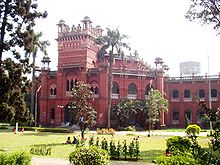
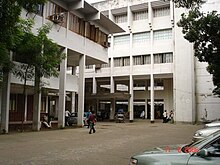


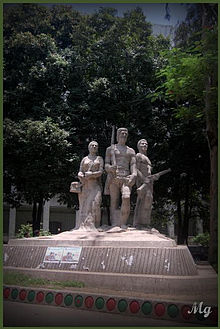
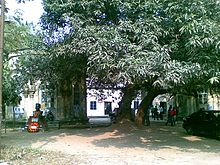






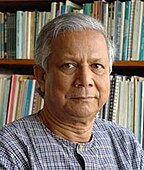



No comments:
Post a Comment